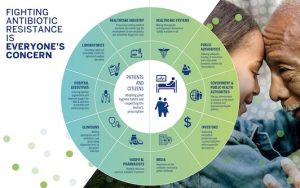Older Canadians left out of the opioid crisis conversation

The rates of opioid prescriptions in Canada have steadily risen over the past 30 years, becoming extremely high. Canadians are one of the top consumers of prescription opioids in the world. Opioids, commonly referred to as ‘narcotics’, are potent medications widely used to treat pain – but they also have strong potential for misuse and addiction.
While much of the perception of the opioid crisis focuses on younger persons consuming often non-prescribed opioids and experiencing high rates of overdoses, many people are unaware that older Canadians actually bear the largest burden from opioids–mostly from prescription sources.
Compared to all other age groups, older Canadians have the largest overall consumption rate of opioids, as well as the highest rates of side effects, overdoses, and mortality associated with prescription opioids. This is strongly related to the fact that older Canadians experience more chronic pain compared to any other age group, and opioids are very commonly used in this population to control pain symptoms.
The NIA’s new report Out of Sight, Out of Mind: Addressing the Invisible and Older Faces of Canada’s Opioid Crisis outlines how due to a number of factors including ageism, older Canadians have been failed across the board with respect to a widespread lack of research, awareness, policy and guidelines geared to understanding and curbing the opioids crisis.
“There is a need to re-examine pain management strategies taught to current and future prescribers that are commonly employed to treat older Canadians, considering the very high rates of prescription opioids used and negative outcomes occurring amongst them as a result,” says Dr. Samir Sinha, Director of Health Policy Research at the NIA and one of the report authors.
To address the opioid crisis in Canada and ensure older Canadians are rightfully centred in these approaches, the NIA’s report offers a series of six evidence-informed policy
recommendations:
1. Apply an ageing-specific lens to opioid policies and practices
2. Increase the use of non-opioid therapies before climbing the opioid pain management ladder and expand access to multidisciplinary pain treatments
3. Increase awareness and understanding of opioid use disorder in older Canadians
4. Create guidelines on opioid use and pain management in Canadian long-term care settings
5. Enhance health care provider education and training around the use and effects of opioids in older Canadians
6. Conduct more research and collect more data on opioid use and harms in older Canadians.








